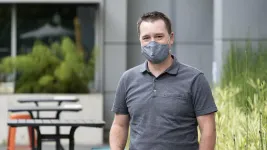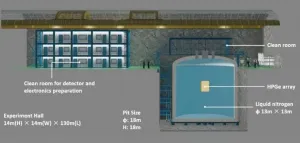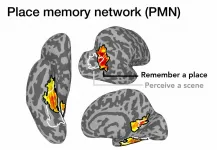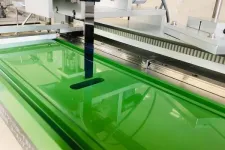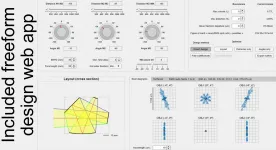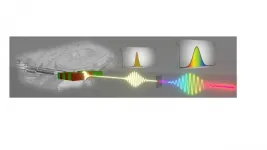(Press-News.org) SAN FRANCISCO, CA--May 12, 2021--Following the minuscule movements of every cell in a petri dish would be a painstaking task for any human. But teach a set of computer programs to do the job, and they can complete it quickly and even observe things that the human eye would miss.
Scientists at Gladstone Institutes have developed such an approach, which uses "neural nets"--artificial intelligence programs that can detect patterns--to analyze the locations of hundreds of cells growing together in a colony. When they applied the technique to a group of stem cells, the program revealed that a small number of cells act as "leaders," able to direct the movements of their neighbors.
"This technique gives us a much more comprehensive view of how cells behave, how they work cooperatively, and how they come together in physical space to form complex organs," says Gladstone Senior Investigator Todd C. McDevitt, PhD, senior author of a new paper published in the journal Stem Cell Reports.
Clusters of stem cells have the ability to form any tissue in the human body when exposed to the right mixture of signaling molecules. But researchers have a poor understanding of how those cells form patterns in space to eventually give rise to complex three-dimensional organs.
Traditionally, to study how cells move in space over time, cell biologists tag cells with fluorescent molecules that make them easy to track. Then, they watch those cells under a microscope to see how they divide and migrate. However, a human observer can only follow a small handful of cells at a time before it becomes too challenging to distinguish different cells and track their movements. This means scientists often have to extrapolate how an entire colony moves based on the movements of just a few of its members.
In the new paper, McDevitt's group trained three different neural networks to follow the motions of individual cells within colonies of thousands of cells. Each network had its own strengths and weaknesses, and individually none of them outperformed a person. But combined, the three neural networks were slightly more effective at tracking cells--they were able to find 94 percent of all cells in sequential frames, meaning they could follow their movements over time. Humans could only track 90 percent of all cells between frames; a scientist trying to follow cell movements could only figure out where nine of every ten cells moved. What's more, the combined neural networks were 500 times faster than a person, averaging 0.35 seconds per frame to identify all cells, while a human averaged about 3 minutes per frame.
When the researchers used the networks to study new colonies of stem cells, they were surprised to see lots more action than previous cell-tracking techniques had identified. While the colonies looked fairly static to the naked eye, the neural networks showed that nearly every cell was on the move--and much of the movement looked random.
"Going in, we didn't really expect there to be that much cell motion, so we had to come up with new approaches to understand the apparent chaos of the cells," says Gladstone Graduate Student David Joy, first author of the new paper.
Cells nearest the edges of each colony moved the most, McDevitt's group discovered. And cells tended to start and stop more than researchers would have guessed--on average, each cell moved for approximately 15 minutes, followed by a quiescent, motionless 10-minute period before another active phase began.
The researchers went on to show how changing the conditions of the cells' environment--by exposing the cells to different nutrients or drugs--can change how cells move. They also used the neural networks to track stem cell colonies over 24 hours as they began to form the multiple layers of different cell types that appear in an early embryo. The team found that cells have a wide range of movement profiles.
"Some cells move with a lot of persistence in once direction, while others move around and around but never get far from where they started," says Ashley Libby, PhD, a former graduate student in McDevitt's lab who helped lead the work. The diversity surprised the team; they had expected most cells to follow similar patterns of movement, she says.
What's more, some cells acted as "leaders" while others behaved more like "followers," the researchers say. The motion of a small number of cells spread outward to their neighbors, eventually shifting the dynamics of the entire colony. It's a pattern that wouldn't have been obvious if just a few cells had been tracked over time by a human observer.
The new findings are just a small sampling of the kinds of observations that will be possible as artificial intelligence approaches are applied to cell tracking, says McDevitt. And the knowledge that comes from these future experiments will be useful to researchers trying to coax cells to come together into complex organoids and organs--for both research and therapeutic purposes.
"If I wanted to make a new human heart right now, I know what types of cells are needed, and I know how to grow them independently in dishes," says McDevitt, who is also a professor of bioengineering and therapeutic sciences at UC San Francisco. "But we really don't know how to get those cells to come together to form something as complex as a heart. To accomplish that, we need more insights into how cells work cooperatively to arrange themselves."
As a next step, McDevitt's team is planning future studies that use the neural networks to analyze movements within stem cell cultures that have genetic mutations, to help show the effect of different genes on cell organization.
INFORMATION:
About the Study
The paper "Deep neural net tracking of human pluripotent stem cells reveals intrinsic behaviors directing morphogenesis" was published by the journal Stem Cell Reports on May 11, 2021: https://www.cell.com/stem-cell-reports/fulltext/S2213-6711(21)00203-4.
The work was supported by the California Institute of Regenerative Medicine (LA1_C14-08015) and the National Science Foundation (CBET 0939511).
About Gladstone Institutes
To ensure our work does the greatest good, Gladstone Institutes (https://gladstone.org) focuses on conditions with profound medical, economic, and social impact--unsolved diseases. Gladstone is an independent, nonprofit life science research organization that uses visionary science and technology to overcome disease. It has an academic affiliation with the University of California, San Francisco.
White evangelicals are best persuaded to mask up through messages that stress the Christian doctrine of "love thy neighbor," according to a UCR-authored study published Tuesday.
The study yielded a second effective way to persuade white evangelicals - but only if they are Republican. That is, messaging from former President Donald Trump that aligns mask-wearing with patriotism.
The lessons learned from the study can be borrowed for pro-vaccine messaging, said study author Jennifer Merolla, a UCR professor of political science.
About 45% of white evangelicals do not plan on getting vaccinated against COVID-19, according to a Pew Research Center poll. Health officials have said persuading the 41 million white evangelical ...
A person's stance on abortion is linked to their, often inaccurate, belief about when a fetus can feel pain, a University of Otago study has found.
Lead author Emma Harcourt, PhD candidate in Otago's Centre for Science Communication, says misinformation about abortion and pregnancy is common and potentially harmful.
"The current medical consensus is that it is unlikely that fetal pain perception is possible before the 29th or 30th weeks of pregnancy. However, we found that most people believe that the capacity to feel pain develops much earlier and that this was particularly evident in participants with anti-abortion views," she says.
The study, published in The Australian and New Zealand Journal of Obstetrics and Gynaecology, recruited 374 ...
Numerous compelling evidences from astroparticle physics and cosmology indicate that the major matter component in the Universe is dark matter, accounting for about 85% with the remaining 15% is the ordinary matter. Nevertheless, people still know little about the dark matter, including its mass and other properties. Many models predict dark matter particles could couple to ordinary particle at weak interaction level, so it is possible to capture the signal of dark matter particle in the direct detection experiment. The scientific goals of the China ...
The evolution of ankle and foot bones into different shapes and sizes helped mammals adapt and thrive after the extinction of the dinosaurs, a study suggests.
A surge of evolution following the mass extinction 66 million years ago enabled mammals to diversify and prosper during a period of major global change, researchers say.
Analysis of bones that form part of the ankle and the heel of the foot reveal that mammals during this time - the Paleocene Period - were less primitive than previously thought.
Palaeontologists from the University of Edinburgh made the discovery by comparing the anatomy of Paleocene mammals with species from the earlier Cretaceous ...
As we move through the world, what we see is seamlessly integrated with our memory of the broader spatial environment. How does the brain accomplish this feat? A new study from Dartmouth College reveals that three regions of the brain in the posterior cerebral cortex, which the researchers call "place-memory areas," form a link between the brain's perceptual and memory systems. The findings are published in Nature Communications.
"As we navigate our surroundings, information enters the visual cortex and somehow ends up as knowledge of where we are - the question is where this transformation into spatial ...
A research group has developed an ion-selective smart porous membrane that can respond to outer stimuli, potentially paving the way for new applications in molecular separation and sensing applications.
Porous thin films have attracted the attention of scientists because of their potential use in sensors, energy harvesting, and ion/molecular separation.
Nanostructure properties, such as pore size, thickness, and film density, affect molecular selectivity and molecular permeability. Surface properties also have a significant impact on molecular selectivity.
Thus it is important to be able to control both the 3D nanostructures and surface properties of ultrathin porous films.
Previous research shed light on smart porous membranes, which are covered with molecules that can respond ...
Eating a diet rich in fruit and vegetables is associated with less stress, according to new research from Edith Cowan University (ECU).
The study examined the link between fruit and vegetable intake and stress levels of more than 8,600 Australians aged between 25 and 91 participating in the Australian Diabetes, Obesity and Lifestyle (AusDiab) Study from Baker Heart and Diabetes Institute.
The findings revealed people who ate at least 470 grams of fruit and vegetables daily had 10 per cent lower stress levels than those who consumed less than 230 grams. The World Health Organization (WHO) recommends ...
Arizona! The sunsets. The saguaros. The snakes.
All of them are part of life in the sunny Southwest, but keeping cool when the latter is holed up in a golf bag, air compressor or swimming pool pump house is a big ask for a lot of people.
Not as big as you'd think, however.
The first study to analyze snake removals in a social-ecological context was recently published by an Arizona State University conservation biologist working with a local rattlesnake removal company.
"I think one of the surprises was that people don't hate snakes," said researcher Heather Bateman of the College of Integrative Sciences and Arts. "A lot of them responded that the snakes are important to the desert ecosystem and the snake belongs ...
Optical imaging systems have been playing an essential role in scientific discovery and societal progress for several centuries. For more than 150 years scientists and engineers have used aberration theory to describe and quantify the deviation of light rays from ideal focusing in an imaging system. Until recently most of these imaging systems included spherical and aspherical refractive lenses or reflective mirrors or a combination of both. With the introduction of new ultra-precision manufacturing methods, it has become possible to fabricate lenses and mirrors that lack the common translational or ...
The relevance for radiology applications is probably the most known advantage of X-ray beams (keV energies) with respect to visible radiation (eV energies) and can be traced back to their superior penetration depth. On a more fundamental ground, however, the relevance of this photon energy range relies on the capability of probing inner shell electrons (as they have comparable binding energies) and mapping molecular structures on the atomic-scale (as typical interatomic spacings are comparable to X-ray wavelengths). Building on such capabilities, large efforts have been devoted by the scientific community to develop X-ray sub-picosecond sources able to access matter properties with a time resolution sufficient to access elemental molecular motions. Free electron lasers (FEL), nowadays available ...
